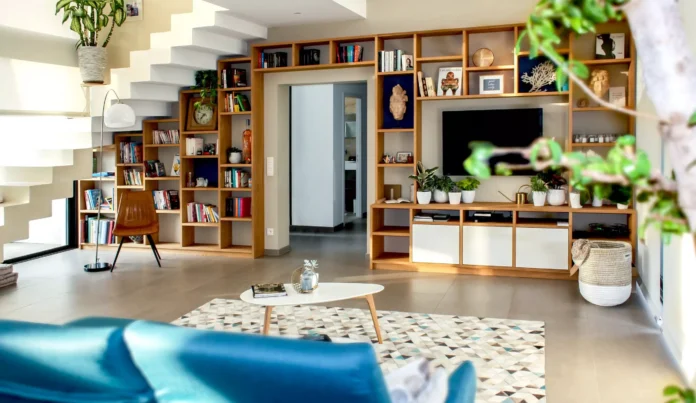Minimalism and sustainability go hand in hand when it comes to creating a home or buying a new home that is not only visually appealing but also eco-friendly. One way to achieve this perfect balance is through upcycling and recycling. By incorporating these practices into your minimalist decorating ideas, you can transform everyday items into unique and stylish pieces while reducing waste and promoting a greener lifestyle. In this article, we will explore the art of upcycling and recycling in minimalist decor, and provide practical tips on how to create a sustainable and eco-friendly home.
- Embrace the Beauty of Simplicity:
Minimalist decor is all about embracing simplicity and removing unnecessary clutter. By adopting a less-is-more approach, you can create a serene and calming environment in your home. When it comes to upcycling and recycling, this principle becomes even more important. Instead of buying new furniture or decorative items, look for opportunities to repurpose and give new life to existing pieces. For instance, a worn-out wooden ladder can be transformed into a stylish bookshelf, or glass jars can be used as minimalist vases for flowers or storage containers.
- Repurpose with Creativity:
Upcycling allows you to tap into your creative side and find innovative ways to repurpose items that would otherwise be discarded. Look around your home and identify objects that can be transformed into something useful and visually appealing. An old suitcase can become a vintage-inspired coffee table, or wooden pallets can be turned into a minimalist bed frame. By repurposing items, you not only save money but also reduce the demand for new products, thus minimizing your ecological footprint.
- Incorporate Natural and Sustainable Materials:
When selecting materials for your minimalist decor, opt for sustainable and eco-friendly options. Choose furniture made from reclaimed or recycled wood, bamboo, or cork, which are renewable resources. Use organic textiles such as linen or hemp for curtains, upholstery, and bedding. By consciously selecting natural and sustainable materials, you contribute to the preservation of the environment while creating a harmonious living space.
- Get Creative with Recycling:
Recycling plays a crucial role in minimizing waste and conserving resources. Look for ways to incorporate recycled materials into your minimalist decor. For example, old newspapers or magazines can be transformed into unique wall art, or glass bottles can be turned into stylish pendant lights. Visit local thrift stores or flea markets to find second-hand treasures that can be refurbished and given a new lease on life.
- Reduce and Reuse:
In addition to upcycling and recycling, reducing and reusing are essential components of sustainable living. Before making any purchase, consider whether you really need the item and if it aligns with your minimalist aesthetic. When decluttering, donate or sell items that no longer serve a purpose, allowing others to give them a new life. By adopting a minimalist mindset of thoughtful consumption, you contribute to a more sustainable future.
Conclusion
Creating a sustainable and eco-friendly home through upcycling and recycling in minimalist decor is both rewarding and impactful. By embracing simplicity, repurposing with creativity, incorporating natural materials, and practicing recycling, you can transform your living space into a haven of style and sustainability. Remember, it’s not just about the aesthetic appeal of your home but also the positive impact it has on the environment. Let your minimalist decorating ideas inspire others to join the movement towards a greener future.

